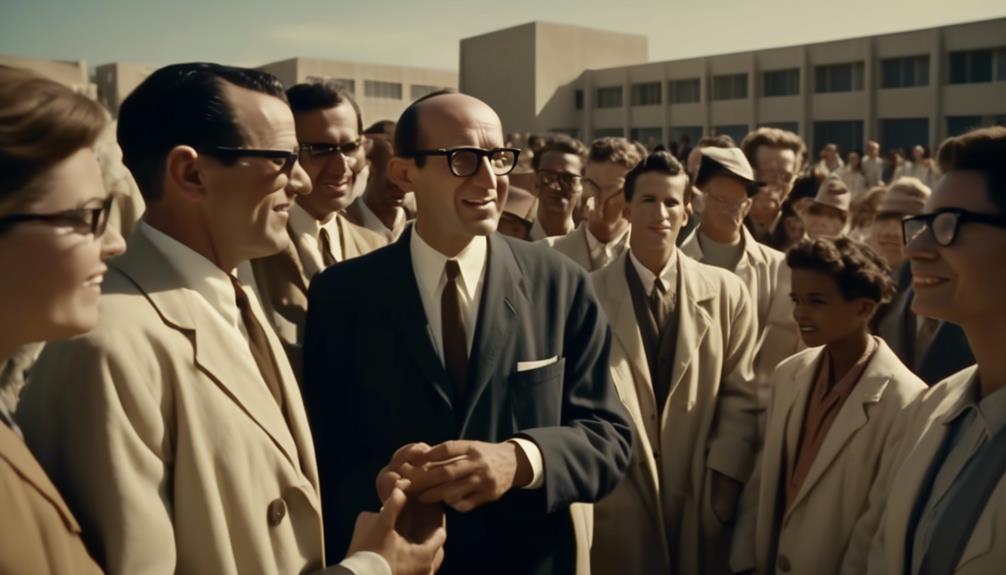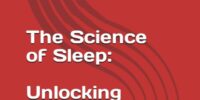Introduction of the Salk Polio Vaccine (1955) – Salk: Recap and Summary: First Effective Polio Vaccine Launched

The Salk Polio Vaccine is considered a breakthrough in medical history. It is responsible for conquering polio, a devastating disease that affected millions of people worldwide. Developed by Dr. Jonas Salk in the 1950s, the vaccine was a major milestone in the field of medicine. It provided a preventive measure against polio, a highly infectious virus that caused paralysis and even death. The Salk Polio Vaccine was the result of years of research and testing, and its success marked a turning point in the fight against polio. This medical breakthrough has saved countless lives and has significantly reduced the incidence of polio worldwide.
Key Takeaways
- Polio is a highly contagious viral disease with significant social, emotional, and economic consequences.
- Dr. Jonas Salk's inactivated polio vaccine (IPV) revolutionized medical science and public health.
- The development of the Salk polio vaccine involved scientific breakthroughs, perseverance, and collaboration.
- The successful introduction of the Salk Polio Vaccine in 1955 led to widespread adoption and a significant reduction in polio cases worldwide.
The Devastating Impact of Polio
Polio, a highly contagious viral disease, has left a devastating impact on millions of people worldwide. The consequences of polio are far-reaching, affecting not only the physical health of individuals but also their social, emotional, and economic well-being. Polio primarily targets the nervous system, leading to muscle weakness, paralysis, and in severe cases, death. The disease often strikes children, robbing them of their ability to walk, play, and lead a normal life. The devastation caused by polio has resulted in a significant burden on families, communities, and healthcare systems.
Fortunately, prevention measures have been developed to combat the spread of this crippling disease. Vaccination campaigns have been instrumental in reducing the global burden of polio. The introduction of the Salk polio vaccine in 1955 marked a major milestone in the fight against polio. This vaccine, developed by Dr. Jonas Salk, effectively prevented the transmission of the poliovirus, providing a glimmer of hope for those affected by the disease. Today, thanks to widespread vaccination efforts, polio cases have been significantly reduced, bringing us closer to a polio-free world.
However, despite these advancements, the battle against polio isn't yet won. Continued vigilance and immunization efforts are crucial to ensure that the devastating consequences of polio are eradicated once and for all. By staying informed, supporting vaccination campaigns, and advocating for global health initiatives, we can contribute to the ongoing fight against polio and help secure a future where no one has to suffer from this debilitating disease.
Dr. Jonas Salk: A Visionary Scientist
Now it's time to explore the incredible achievements of Dr. Jonas Salk, a true visionary in the field of medicine.
Dr. Salk's groundbreaking discovery of the polio vaccine revolutionized the world of medical science and had a profound impact on public health.
His contributions not only saved countless lives but also paved the way for future advancements in the field, leaving a lasting legacy that continues to inspire scientists and researchers today.
Salk's Groundbreaking Discovery
Dr. Jonas Salk, a visionary scientist, made a groundbreaking discovery that would forever change the course of medical history. His scientific breakthrough came in the form of a new methodology for developing a polio vaccine.
Salk's approach involved using killed poliovirus instead of the live, attenuated virus that was commonly used at the time. This innovative method allowed for the production of a safer and more effective vaccine.
Salk's meticulous research and rigorous testing led to the successful development of the polio vaccine, which was proven to be highly effective in preventing the disease. His discovery marked a turning point in the fight against polio and laid the foundation for future advancements in vaccine development.
Dr. Salk's groundbreaking work has saved countless lives and continues to be celebrated as a triumph of scientific achievement.
Contributions to Medical Science
With his visionary approach and groundbreaking methodology, Dr. Jonas Salk revolutionized the field of medical science and made significant contributions to vaccine development. His work on the polio vaccine not only eradicated a devastating disease but also paved the way for future medical breakthroughs and scientific advancements.
- Dr. Salk's development of the inactivated polio vaccine (IPV) marked a turning point in the fight against polio. This breakthrough allowed for the mass production and distribution of a safe and effective vaccine, saving countless lives.
- His innovative approach to vaccine development, which focused on using killed viruses instead of live ones, set a new standard in the field. This approach not only eliminated the risk of vaccine-induced infection but also laid the foundation for the development of other important vaccines.
- Dr. Salk's commitment to rigorous testing and meticulous research methods ensured the safety and efficacy of the polio vaccine. His scientific rigor and attention to detail set a precedent for future vaccine development, leading to improved public health outcomes.
Impact on Public Health
Dr. Jonas Salk's groundbreaking work on the inactivated polio vaccine not only revolutionized the field of medical science but also had a profound impact on public health by effectively combating the devastating effects of polio. The introduction of the Salk polio vaccine in 1955 brought hope to a society plagued by the fear of this crippling disease. The long-term effects of this vaccine on society have been nothing short of remarkable. Polio, once a major public health concern, has now been nearly eradicated in many parts of the world. The table below highlights the significant impact of the Salk polio vaccine on public health:
| Impact on Society | Long-Term Effects |
|---|---|
| Drastic reduction in polio cases | Prevention of lifelong disabilities caused by polio |
| Improved quality of life for polio survivors | Increased life expectancy |
| Elimination of polio as a public health threat | Global efforts towards eradication of polio |
The introduction of the Salk polio vaccine not only saved countless lives but also transformed the landscape of public health, leaving a lasting legacy for generations to come.
The Race to Develop a Polio Vaccine
Now let's turn our attention to the race to develop a polio vaccine.
This was no easy task, as vaccine development faced numerous challenges.
Scientists and researchers engaged in competitive research efforts, each striving to be the first to find a solution to this devastating disease.
Vaccine Development Challenges
The race to develop a polio vaccine was a challenging endeavor that required immense scientific innovation and collaboration. Vaccine research faced numerous obstacles on the path to finding a solution to this debilitating disease. Here are three key challenges that scientists encountered:
- Vaccine development: Creating a safe and effective vaccine was no easy task. Scientists had to identify the specific strains of the poliovirus, understand its biology, and find a way to stimulate the immune system to produce a protective response.
- Manufacturing scale-up: Once a vaccine was developed, the challenge shifted to producing it on a large scale. This required establishing efficient manufacturing processes, ensuring consistent quality, and meeting the demand for millions of doses.
- Clinical trials: Conducting rigorous clinical trials was crucial to prove the vaccine's safety and efficacy. This involved recruiting participants, administering the vaccine, and closely monitoring their health outcomes.
Overcoming these challenges required scientific breakthroughs, perseverance, and collaboration among researchers, manufacturers, and regulatory authorities. The successful development of the Salk polio vaccine stands as a testament to human ingenuity and determination in the face of adversity.
Competitive Research Efforts
In the race to develop a polio vaccine, scientists from around the world engaged in competitive research efforts, striving to be the first to find a solution to this devastating disease. The urgency to combat polio led to a surge in scientific collaboration, as researchers shared information and worked together to accelerate the development of a vaccine.
Competitive research played a crucial role in driving innovation and pushing boundaries in the quest for a polio vaccine. Scientists explored different approaches and techniques, competing to achieve breakthroughs that could save countless lives. This intense competition fostered an environment of rapid progress and propelled the scientific community towards the ultimate goal of eradicating polio.
Despite the rivalry, scientists recognized the importance of collaboration, understanding that only by joining forces could they conquer this formidable enemy.
The Testing and Trials of the Salk Polio Vaccine
After years of meticulous research and rigorous testing, the Salk Polio Vaccine emerged as a groundbreaking solution in the fight against polio. The testing protocols employed during the development of this vaccine were vital in ensuring its safety and effectiveness.
Here are three key aspects of the testing and trials of the Salk Polio Vaccine:
- Large-scale field trials: To determine the vaccine's effectiveness, large-scale field trials were conducted involving thousands of children. These trials involved administering the vaccine to one group while another group received a placebo. The results of these trials demonstrated the vaccine's ability to prevent polio and pave the way for its widespread use.
- Double-blind studies: To eliminate bias and ensure accurate results, double-blind studies were conducted. In these studies, neither the participants nor the researchers knew who received the vaccine and who received the placebo. This approach helped ensure the reliability of the data collected during the trials.
- Long-term follow-up: The testing protocols also included long-term follow-up to assess the vaccine's long-lasting effectiveness and safety. By monitoring the vaccinated individuals over an extended period, researchers could gather valuable data on the vaccine's ability to provide long-term protection against polio.
The rigorous testing and trials of the Salk Polio Vaccine not only confirmed its effectiveness but also established it as a safe and reliable solution in the fight against polio. These protocols ensured that the vaccine provided the freedom from the debilitating effects of the disease, marking a significant milestone in medical history.
The Successful Launch of the Vaccine
With meticulous planning and groundbreaking research, the Salk Polio Vaccine was successfully introduced, revolutionizing the fight against polio. The vaccine's successful launch had a profound impact on public health, as it marked a major turning point in the battle against the crippling disease.
On April 12, 1955, the Salk Polio Vaccine was declared safe and effective after extensive testing and trials. The announcement brought hope and relief to millions of people around the world who'd been living in fear of polio. The vaccine was administered through a series of injections, providing immunity against the poliovirus.
The successful launch of the vaccine had an immediate and lasting impact on public health. Prior to its introduction, polio had caused widespread panic and devastation, particularly among children. The disease had left many paralyzed or with lifelong disabilities.
However, with the introduction of the Salk Polio Vaccine, the number of polio cases began to decline rapidly. Communities that had once been ravaged by the disease now saw a significant decrease in polio-related hospitalizations and deaths. The successful launch of the vaccine gave people newfound confidence and hope for a future free from the threat of polio.
Public Reception and Hesitations
Amidst the excitement and anticipation surrounding the Salk Polio Vaccine, there were also hesitations and concerns among the public. The introduction of a new vaccine, especially one that claimed to prevent a devastating disease like polio, naturally sparked skepticism. Here are some of the main reasons behind the public's skepticism:
- Lack of trust in the medical community: Some individuals were skeptical about the effectiveness and safety of the vaccine due to previous incidents where medical treatments had unexpected side effects or weren't as effective as claimed.
- Fear of potential side effects: The public was concerned about the possible adverse reactions that the vaccine might cause. Since the vaccine was new and not extensively tested, there was uncertainty about its long-term effects.
- Vaccine distribution challenges: The logistics of distributing the vaccine to millions of people proved to be a significant challenge. Ensuring equitable access to the vaccine across different regions and populations was a complex task.
These concerns, while understandable, didn't outweigh the hope and potential benefits that the Salk Polio Vaccine offered. In the face of a disease that had caused widespread suffering and fear, the public's hesitations were ultimately overcome, leading to the widespread adoption of the vaccine.
The Enduring Legacy of the Salk Polio Vaccine
The Salk Polio Vaccine has left a lasting impact on public health and the eradication of polio. Its introduction in 1955 marked a turning point in the fight against this debilitating disease. The vaccine's enduring impact can be seen in the significant reduction of polio cases worldwide. Prior to its introduction, polio was a widespread concern, causing paralysis and death in thousands of people, particularly children. The vaccine provided a crucial tool in preventing the spread of the virus and protecting individuals from its devastating effects.
Despite its success, the legacy of the Salk Polio Vaccine also highlights ongoing challenges. Polio still persists in some parts of the world, particularly in regions with limited access to healthcare and vaccination programs. These areas face difficulties in reaching vulnerable populations and ensuring widespread vaccine coverage. Additionally, the recent emergence of vaccine hesitancy and misinformation poses a threat to the progress made in polio eradication. Overcoming these challenges requires continued efforts to improve healthcare infrastructure, strengthen vaccination campaigns, and address public concerns through education and awareness.
To illustrate the impact of the Salk Polio Vaccine, consider the following table:
| Year | Polio Cases Reported | Countries with Endemic Polio |
|---|---|---|
| 1955 | 28,985 | 38 |
| 1980 | 1,000 | 6 |
| 2019 | 176 | 2 |
This data clearly demonstrates the significant reduction in polio cases and the shrinking number of countries where the disease remains endemic. While there is still work to be done, the enduring legacy of the Salk Polio Vaccine serves as a reminder of the progress achieved and the ongoing commitment needed to eradicate polio once and for all.
Global Efforts in Polio Eradication Today
Global efforts in polio eradication today continue to be a critical priority in the fight against this debilitating disease. Despite significant progress made in reducing polio cases by over 99%, the disease still persists in a few countries. To ensure a polio-free world, the following strategies are being implemented:
- Routine Immunization: Strengthening routine immunization programs in countries with weak healthcare systems is crucial. This ensures that every child receives multiple doses of the polio vaccine, providing long-term protection against the virus.
- Supplementary Immunization Activities: Conducting mass vaccination campaigns, also known as National Immunization Days, is a key strategy to reach children who may have missed routine immunization. These campaigns involve vaccinating large numbers of children in a short period, thereby boosting immunity in the population.
- Surveillance and Outbreak Response: Active surveillance systems are in place to detect any polio cases promptly. Rapid response teams are deployed to investigate and respond to any outbreak, ensuring a swift and effective containment of the virus.
With the commitment of governments, international organizations, and communities, these global polio eradication efforts are making significant progress. However, challenges such as vaccine hesitancy, conflict zones, and hard-to-reach populations persist. It's essential to maintain high vaccination coverage and strengthen health systems to achieve the ultimate goal of a polio-free world.
Frequently Asked Questions
How Does the Salk Polio Vaccine Work to Protect Against Polio?
The Salk polio vaccine works by introducing a killed virus into your body, stimulating your immune system to produce antibodies. These antibodies help protect against polio, making the vaccine highly effective in preventing the disease.
What Were the Specific Challenges Faced by Dr. Jonas Salk During the Development of the Polio Vaccine?
You might be wondering about the challenges faced by Dr. Jonas Salk during the development of the polio vaccine. It's important to understand the difficulties he encountered in order to appreciate his remarkable achievement.
How Long Did It Take to Test and Trial the Salk Polio Vaccine Before Its Successful Launch?
It took several years of testing and trialing before the Salk polio vaccine was successfully launched. The testing duration was rigorous, but it was necessary to ensure the vaccine's safety and effectiveness.
How Did the Public Initially React to the Introduction of the Salk Polio Vaccine?
When the Salk polio vaccine was first introduced, the public response was overwhelmingly positive. Vaccine acceptance was high, as people recognized the importance of protecting themselves and their loved ones from this debilitating disease.
What Are the Current Global Efforts in Polio Eradication and How Does the Salk Polio Vaccine Play a Role in These Efforts?
Global efforts in polio eradication are ongoing, with the Salk polio vaccine playing a crucial role. This vaccine has had a significant impact in reducing polio cases worldwide, contributing to the overall goal of eliminating the disease.









